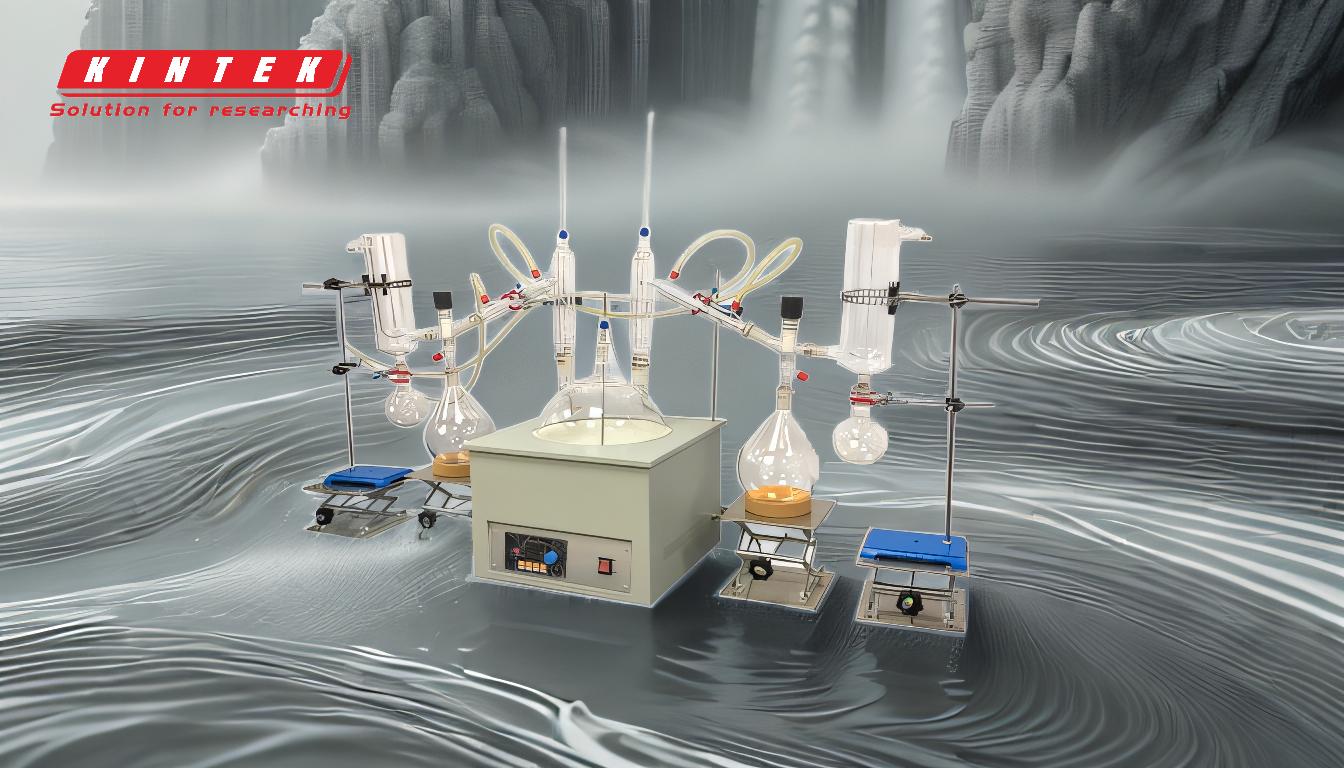Distillation is a fundamental separation technique used to isolate components in a liquid mixture based on their differing boiling points. The process involves heating the mixture to vaporize the more volatile component, condensing the vapor back into liquid form, and collecting the purified substance. The five key steps of distillation include preparation and setup, heating the mixture, vaporization, condensation, and collection. Each step is critical to ensuring the efficiency and purity of the separated components. Below, these steps are explained in detail, along with considerations for optimizing the process.
Key Points Explained:

-
Preparation and Setup
- Before beginning distillation, ensure all equipment is clean, properly assembled, and securely connected.
- Check for leaks or loose fittings to prevent vapor loss or contamination.
- If using insulation, wrap the boiling flask and the bottom quarter of the distillation head, leaving the Vigreux column visible for observation.
- Close the valve on the manifold to prepare for controlled airflow.
- Set up the heating source (e.g., heating mantle) and stirring mechanism, ensuring they are calibrated and ready for use.
-
Heating the Mixture
- Begin heating the mixture gradually to avoid sudden boiling or splashing.
- Start with a low temperature (e.g., 60°C) and increase it incrementally as needed.
- If using an analog heating mantle, set the knob to the middle position initially and adjust based on the reaction.
- Monitor the mixture closely to ensure even heating and prevent overheating, which could degrade the components.
-
Vaporization
- As the mixture heats, the component with the lower boiling point will begin to vaporize first.
- Maintain the temperature just above the boiling point of the target component to ensure efficient vaporization.
- If the reaction slows or stops, increase the temperature slightly (e.g., 10°C) and adjust the stirring speed (e.g., 900-1000 RPM) to promote consistent vaporization.
-
Condensation
- The vaporized component travels through the distillation apparatus (e.g., Vigreux column) and enters the condenser.
- The condenser cools the vapor, causing it to condense back into liquid form.
- Ensure the condenser is functioning properly and that the cooling medium (e.g., water) is circulating at the appropriate rate to maintain condensation efficiency.
-
Collection
- The condensed liquid, now purified, is collected in a receiving flask or container.
- Monitor the flow rate of the distillate to ensure consistent collection.
- Once the distillate stops flowing and the reaction ceases, turn off the heat, stirring, and vacuum pump (if used).
- Open the valve to allow atmospheric pressure to equalize within the system before disassembling the apparatus.
By following these five steps, distillation can effectively separate and purify components in a mixture. Proper preparation, controlled heating, and careful monitoring are essential to achieving high yields and purity. This process is widely used in industries such as chemistry, pharmaceuticals, and beverage production, demonstrating its versatility and importance in scientific and industrial applications.
Summary Table:
| Step | Key Actions | Purpose |
|---|---|---|
| Preparation | Clean and assemble equipment, check for leaks, set up heating and stirring. | Ensure a safe and efficient setup for the distillation process. |
| Heating | Gradually heat the mixture, monitor temperature, and prevent overheating. | Vaporize the more volatile component without degrading the mixture. |
| Vaporization | Maintain temperature above the boiling point, adjust stirring speed as needed. | Promote consistent vaporization of the target component. |
| Condensation | Cool vapor in the condenser, ensure proper cooling medium circulation. | Convert vapor back into liquid form for collection. |
| Collection | Collect purified liquid, monitor flow rate, and safely disassemble the system. | Obtain high-purity distillate and ensure safe system shutdown. |
Ready to optimize your distillation process? Contact our experts today for personalized guidance!











